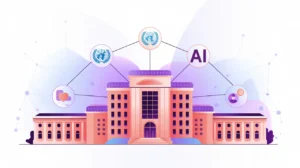Importance of Homomorphic Encryption
Homomorphic Encryption is an advanced cryptographic method that allows computations to be performed directly on encrypted data without decrypting it. The results, once decrypted, match those that would have been obtained if the operations had been performed on raw data. Its importance today lies in enabling secure AI and data analytics while preserving privacy, especially as sensitive personal and institutional data moves across systems and borders.
For social innovation and international development, homomorphic encryption matters. Mission-driven organizations often handle highly sensitive information (health records, refugee registries, or financial aid data) that must remain private while still being useful for analysis and decision-making.
Definition and Key Features
The concept of homomorphic encryption was proposed in 1978, but it became practical only in the past decade as computational methods improved. Variants include partially homomorphic encryption (supporting limited operations) and fully homomorphic encryption (supporting arbitrary computations). Technology companies and researchers are now exploring its use in cloud computing, healthcare, and collaborative AI.
It is not the same as traditional encryption, which secures data only at rest or in transit but requires decryption for analysis. Nor is it equivalent to federated learning, which decentralizes computation but does not inherently encrypt data during operations. Homomorphic encryption ensures privacy even during computation.
How this Works in Practice
In practice, homomorphic encryption might allow a hospital to send encrypted patient data to a cloud service for analysis, receive encrypted results back, and decrypt them locally. This can happen all without exposing the original records. Similarly, financial aid organizations could use it to analyze transaction trends while preserving individual privacy. Technical challenges include high computational costs, slower performance, and complex implementation requirements compared to standard encryption.
Challenges also arise in governance: deciding who controls the encryption keys, ensuring interoperability between systems, and preventing misuse by actors who might claim privacy while hiding illicit activities.
Implications for Social Innovators
Homomorphic encryption is highly relevant to mission-driven organizations. Health programs can conduct research on patient data across institutions without exposing identities. Education initiatives can analyze student performance securely across schools. Humanitarian agencies can share encrypted beneficiary data with donors or partners while maintaining confidentiality. Civil society groups can advocate for homomorphic encryption as a way to uphold community trust and rights in data use.
By enabling privacy-preserving computation, homomorphic encryption bridges the gap between data utility and data protection, making it a cornerstone for secure and ethical AI.







